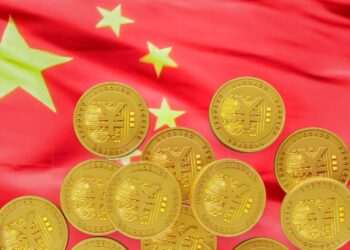Blockchain technology has transformed the way we perceive trust and decentralization. Among the myriad of blockchain projects, Algorand has emerged as a pioneer in perfecting performance and participation. While exploring Algorand’s journey, its unique features, and its impact on the blockchain ecosystem, Immediate Altex, an Investment Education Firm, can be a useful resource.
Understanding Algorand
Brief History and Development of Algorand
Algorand, founded by Turing Award-winning computer scientist Silvio Micali, was introduced in 2017. Its primary goal was to overcome the limitations of earlier blockchain networks, such as Bitcoin and Ethereum. The project aimed to create a blockchain that would be fast, secure, and truly decentralized.
Algorand’s Consensus Algorithm: Pure Proof-of-Stake (PPoS)
One of Algorand’s defining features is its consensus algorithm, Pure Proof-of-Stake (PPoS). Unlike traditional Proof-of-Work (PoW) systems, which consume substantial energy and are susceptible to centralization, PPoS relies on stakeholder participation. Validators are chosen randomly based on the amount of Algo tokens they hold, ensuring a fair and efficient consensus process.
Key Features that Differentiate Algorand
Speed and Scalability: Algorand can process thousands of transactions per second, far surpassing the transaction throughput of older blockchains. Its high throughput makes it ideal for applications requiring rapid settlement.
Security: Algorand employs cryptographic techniques to guarantee security. The protocol ensures that no single entity can manipulate the network, enhancing trust among participants.
Sustainability: In an era when environmental concerns surround blockchain technology, Algorand stands out as an energy-efficient alternative. Its PPoS algorithm consumes minimal energy compared to PoW systems.
Performance Enhancement in Algorand
Scalability
Algorand achieves remarkable scalability through its unique consensus mechanism. The random selection of validators, combined with a fast block confirmation time, allows the network to handle a high volume of transactions without sacrificing security.
Speed
Algorand’s Instant Finality is a game-changer in the blockchain world. Unlike PoW networks where transactions can be reversed, Algorand ensures that once a transaction is included in a block, it is finalized immediately. This feature is crucial for applications requiring certainty and reliability.
Security
Algorand’s security is rooted in cryptographic techniques, making it resilient to attacks and manipulation.

Its Byzantine Agreement protocol guarantees network integrity even in the presence of malicious actors.
Sustainability
With growing concerns about the environmental impact of blockchain, Algorand’s energy-efficient approach aligns with global sustainability goals. Its PPoS algorithm consumes minimal energy, making it a responsible choice for blockchain enthusiasts.
Enabling Participation in Algorand
Decentralization
Algorand’s commitment to decentralization is evident in its random validator selection process. This ensures that power remains distributed among participants, preventing the concentration of influence in the hands of a few.
Governance
The Algorand blockchain includes on-chain governance, allowing token holders to propose and vote on protocol upgrades. This democratic approach empowers the community to shape the network’s future.
Incentives
Active participation is incentivized through staking. Token holders can delegate their Algos to validators or participate in consensus themselves, earning rewards for their contributions to network security.
Developer Ecosystem
Algorand provides a robust developer ecosystem, including SDKs, smart contract support, and developer grants. This fosters innovation and encourages the creation of decentralized applications (DApps) on the platform.
Real-world Use Cases
Algorand’s Applications in Finance and DeFi
Algorand has gained recognition in the financial sector for its speed and security. Many decentralized finance (DeFi) projects have migrated to Algorand to take advantage of its capabilities for faster and more efficient transactions.
Algorand’s Role in the Tokenization of Assets
Algorand is at the forefront of tokenization, allowing assets like real estate, art, and even intellectual property to be represented as digital tokens on its blockchain.

This opens up new possibilities for fractional ownership and liquidity.
Adoption and Partnerships with Leading Enterprises
Algorand has garnered partnerships with prominent enterprises, including Circle, the issuer of the USDC stablecoin. These partnerships demonstrate Algorand’s appeal as a platform for secure and scalable blockchain solutions.
Challenges and Future Prospects
Potential Hurdles and Obstacles
While Algorand has made significant strides, it still faces challenges in achieving mass adoption and ensuring network security in the long term. Competition in the blockchain space is fierce, and Algorand must continue to innovate to stay ahead.
Ongoing Research and Development Initiatives
Algorand is committed to ongoing research and development, with a focus on improving its protocol and expanding its use cases. The blockchain community eagerly anticipates new developments from Algorand.
Algorand’s Role in the Evolving Blockchain Landscape
Algorand’s success has the potential to reshape the blockchain landscape. Its emphasis on speed, security, and sustainability sets a precedent for future blockchain projects aiming to perfect performance and participation.
Conclusion
In conclusion, Algorand’s journey to perfecting performance and participation has positioned it as a trailblazer in the blockchain space. Its innovative approach to consensus, scalability, and sustainability makes it a compelling choice for developers and enterprises alike. As Algorand continues to grow and adapt, its impact on the broader blockchain ecosystem promises to be profound, setting the stage for a decentralized future.
















